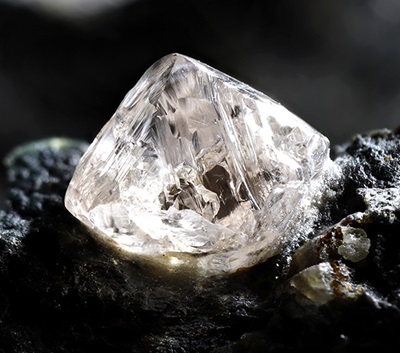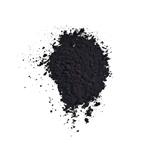Chemical Properties
Diamond is among the strongest Raman scatterers, and Raman spectroscopy is an important diagnostic tool for determining diamond film quality. Diamond has an intense Raman band at 1332 cm
-1, the presence of which verifies a material contains diamond. The more regular the crystal lattice, the narrower the width of this band. Graphite has two first-order phonon Raman bands, a strong band at 1580 cm?1 and a weaker one at 1357 cm
-1.
Chemical Properties
very hard crystals or light green powder
Physical properties
Exists in two major varieties:
those bearing nitrogen as an
impurity (Type I) and those
without nitrogen (Type II).
These two subgroups are further
subdivided into Types Ia, Ib, IIa,
and IIb. Type Ia diamonds are
the most common type of
naturally occurring diamond;
they exhibit 0.1 to 0.2 wt.%
nitrogen present in small
aggregates, including platelets.
By contrast, nitrogen in Type Ib
diamonds is dispersed
substitutionally. Of the two
Type II diamond types, Type IIb
is a semiconductor due to
minute amounts of boron
impurities and exhibits a blue
color, whereas Type IIa
diamonds are comparatively
pure. Electric insulator
(E = 7 eV.). Burns in oxygen.
Uses
Jewelry. Polishing, grinding, cutting glass, bearings for delicate instruments; manufacture of dies for tungsten wire and similar hard wires; making styli for recorder heads, long-lasting phonograph needles. In semiconductor research.
Uses
Monocrystalline diamond particles internalized in human endothelial cells have potential applications in drug delivery.
Uses
Diamond powder is generally used as an abrasive to grind and polish hard surfaces.
Definition
ChEBI: An allotropic form of the element carbon with cubic structure which is thermodynamically stable at pressures above 6 GPa at room temperature and metastable at atmospheric pressure. At low pressures diamond converts rapidly to graphite at temperatures above
1900 K in an inert atmosphere. The chemical bonding between the carbon atoms is covalent with sp3 hybridization.
General Description
Diamond nanopowder (DNPs) may be produced by multicathode direct current plasma chemical vapor deposition and high pressure high temperature (HPHT).
Potential uses of nano-diamond are in biosensor applications. Surface modification of nano-diamond may enhance its linking mechanism with specific biomolecules. DNPs can be subjected to functionalization post Fenton treatment. These functionalized DNPs may be used as gene delivery systems.
Structure and conformation
Diamond crystallographic structure consists to a face centered cubic crystal lattice where the carbon atoms occupy the eight corners, the centers of the six faces and half of the tetrahedral crystallographic sites (Z = 8). The most common crystal habits for euhedral crystals found in nature are the octahedron {111}, the cube {100}, and the dodecahedron {110} sometimes rounded due to etching. Diamond normally cleaves on the (111) plane but cleavage has been observed on the (110) plane and to a lesser extent some other crystallographic planes.



